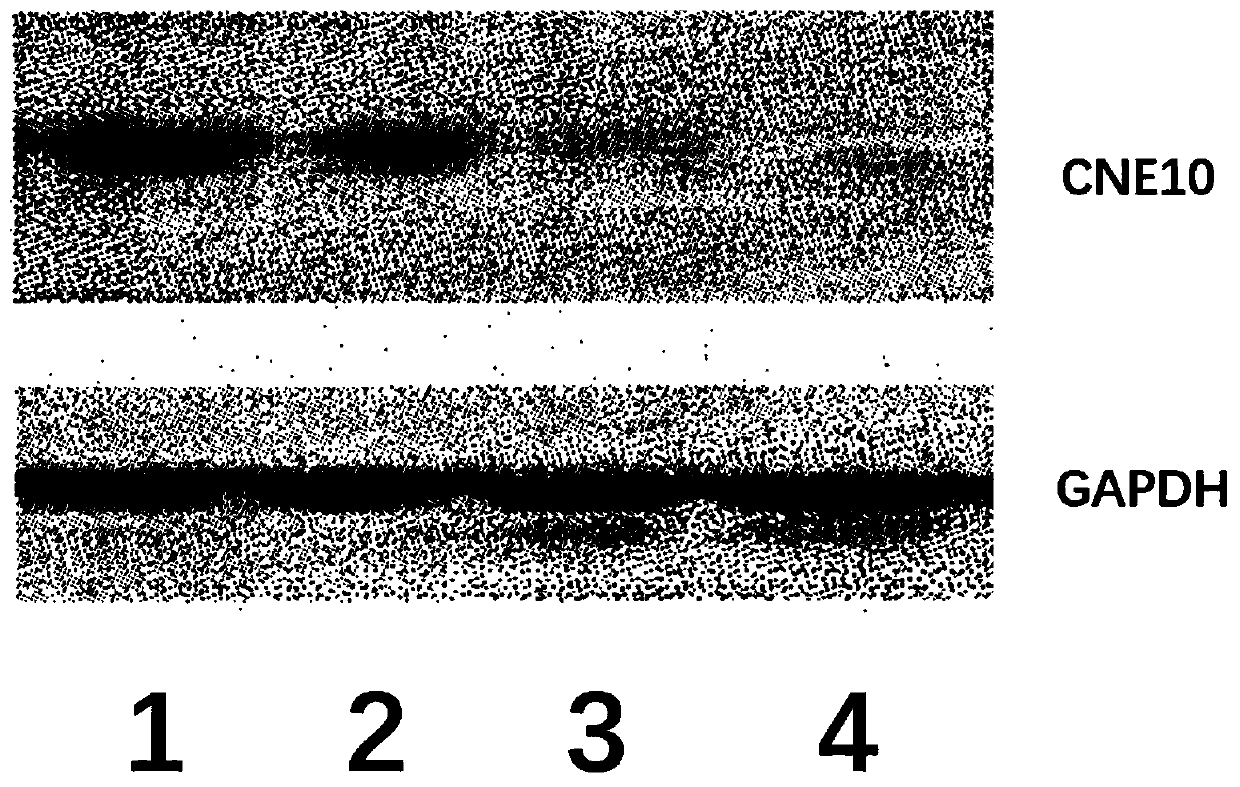CNE10 Gene Knockout in Epidermal Stem Cells Using CRISPR-Cas System
A technology for epidermal stem cells and cells, which is applied in the field of establishing epidermal stem cell lines, can solve the problem that siRNA cannot stabilize heredity, etc., and achieve the effects of high knockout efficiency, good knockout effect, and stable passage.
- Summary
- Abstract
- Description
- Claims
- Application Information
AI Technical Summary
Problems solved by technology
Method used
Image
Examples
Embodiment 1
[0022] Example 1. Construction of CRISPR expression vector
[0023] gRNA design
[0024] According to the gene sequence of the target gene, through the applicant's unique optimization design method, the specific form of sgRNA obtained by specific screening is as follows:
[0025] CNE10-sgRNA1: 5’to 3’gacgtcggattccagcctcc
[0026] CNE10-sgRNA2: 5’to 3’ccagcgcctggggctctccg
[0027] According to the above gRNA, CACC is added to the 5'end to obtain the forward oligonucleotide sequence, and AAAC is added to the 5'end of the complementary strand to obtain the reverse oligonucleotide sequence. The forward and reverse oligos are synthesized respectively. Nucleotide sequence, and then the synthesized sequence is denatured and annealed to obtain a double-stranded DNA fragment with BbsI sticky ends, as follows: Forward: 5'-CACCNNNNNNNNNNNNNNNNNNNNNNNN Reverse: NNNNNNNNNNNNNNNNNNNNCAAA-5', denaturation and annealing system: 2μl positive To the oligonucleotide chain (50μM) 2μl reverse oligonucleot...
Embodiment 2
[0031] Example 2 Cloning of the enhanced protein ESCS-higher and construction of the vector
[0032] The ESCS-higher gene was cloned, and the gene sequence described in SEQ ID NO:1 was obtained through the method of full gene synthesis. Using this sequence as a template, the sequence of the upstream and downstream primers was 5'-atgatatactttattagaat-3', 5 '-tcaagggatttccatttctc-3', primers and whole genome were synthesized by Shanghai Shenggong Co., Ltd. The PCR reaction amplifies the target gene fragment of the ESCS-higher gene. The amplification reaction system is as follows: 95°C, 40s, 57°C, 1min, 72°C, 1min, 72°C, 10min, cycle 35 times, PCR products are produced by Shanghai Shenggong Co., Ltd. Sequencing was performed, and the binding completely matched SEQ ID NO:1 through sequencing. Subsequently, the target gene amplified by PCR was connected to the empty vector lentiviral vector pHIV-CS-CDF-CG-PRE, and the recombinant lentiviral vector was identified by methods such as PC...
Embodiment 3
[0033] Example 3 Application analysis of CRISPR / Cas9 in epidermal stem cells
[0034] The sgRNA expression plasmid prepared in Example 1 and the well-known Cas9 expression plasmid were co-transfected into epidermal stem cells. Using liposome transfection method, the constructed transfection system of transfected epidermal stem cells and reagents make Lipofectamine TM 2000 (invitrogen company), refer to the transfection instructions for detailed transfection steps. Stem cells not transfected with the synergistic gene of Example 2 were used as a positive control.
PUM
| Property | Measurement | Unit |
|---|---|---|
| control rate | aaaaa | aaaaa |
Abstract
Description
Claims
Application Information
 Login to View More
Login to View More - R&D
- Intellectual Property
- Life Sciences
- Materials
- Tech Scout
- Unparalleled Data Quality
- Higher Quality Content
- 60% Fewer Hallucinations
Browse by: Latest US Patents, China's latest patents, Technical Efficacy Thesaurus, Application Domain, Technology Topic, Popular Technical Reports.
© 2025 PatSnap. All rights reserved.Legal|Privacy policy|Modern Slavery Act Transparency Statement|Sitemap|About US| Contact US: help@patsnap.com

